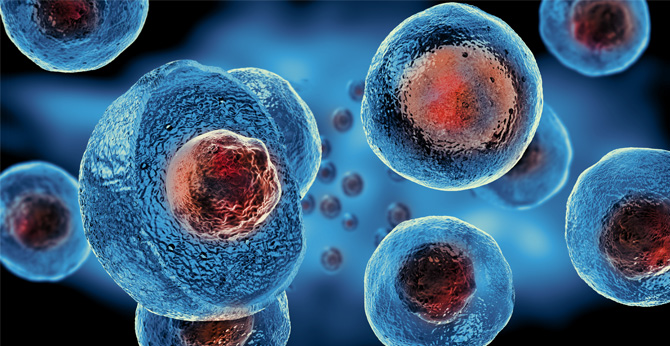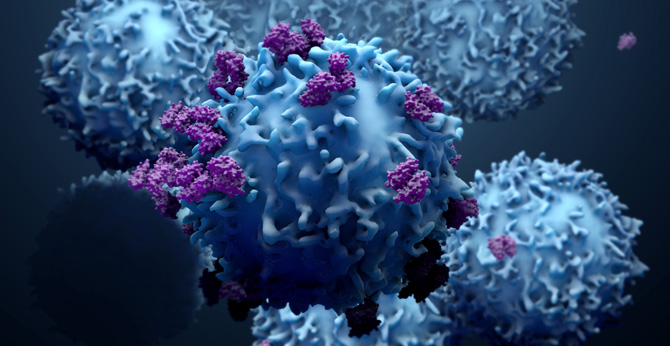All products and services are For Research Use Only and CANNOT be used in the treatment or diagnosis of disease.
The human immunodeficiency virus (HIV) is a lentivirus (a subgroup of retrovirus) that causes the acquired immunodeficiency syndrome (AIDS), a condition in humans in which progressive failure of the immune system allows life-threatening opportunistic infections and cancers to thrive. Without treatment, average survival time after infection with HIV is estimated to be 9 to 11 years, depending on the HIV subtype. Infection with HIV occurs by the transfer of blood, semen, vaginal fluid, preejaculate, or breast milk. Within these bodily fluids, HIV is present as both free virus particles and virus within infected immune cells.
 Loading...
Loading...
| CAT | Product Name | Target Species | Antibody Clone | Antibody Host | Receptor Construction | Vector Type | Targeting Cell Type | CAR Vector Type | Inquiry & Datasheet |
| CAR-T-2-LX381 | Anti-HIV (XHM187) h(CD28-CD3ζ) CAR, pCDCAR1 | Human | XHM187 | Human | scFv-CD28-CD3ζ | Lentiviral vector | T cell | ||
| CAR-T-2-LX384 | Anti-HIV (XHM188) h(CD28-CD3ζ) CAR, pCDCAR1 | Human | XHM188 | Macaque | scFv-CD28-CD3ζ | Lentiviral vector | T cell | ||
| CAR-T-2-LX385 | Anti-HIV (XHM189) h(CD28-CD3ζ) CAR, pCDCAR1 | Human | XHM189 | Human | scFv-CD28-CD3ζ | Lentiviral vector | T cell | ||
| CAR-T-2-LX387 | Anti-HIV (XHM190) h(CD28-CD3ζ) CAR, pCDCAR1 | Human | XHM190 | Human | scFv-CD28-CD3ζ | Lentiviral vector | T cell | ||
| CAR-T-2-LX388 | Anti-HIV (XHM191) h(CD28-CD3ζ) CAR, pCDCAR1 | Human | XHM191 | Rabbit | scFv-CD28-CD3ζ | Lentiviral vector | T cell | ||
| CAR-T-2-LX389 | Anti-HIV (XHM192) h(CD28-CD3ζ) CAR, pCDCAR1 | Human | XHM192 | Rhesus macaque | scFv-CD28-CD3ζ | Lentiviral vector | T cell | ||
| CAR-T-2-LX390 | Anti-HIV (XHM193) h(CD28-CD3ζ) CAR, pCDCAR1 | Human | XHM193 | Rhesus macaque | scFv-CD28-CD3ζ | Lentiviral vector | T cell | ||
| CAR-T-2-LX394 | Anti-HIV (XHM194) h(CD28-CD3ζ) CAR, pCDCAR1 | Human | XHM194 | Rhesus macaque | scFv-CD28-CD3ζ | Lentiviral vector | T cell | ||
| CAR-T-2-LX395 | Anti-HIV (XHM195) h(CD28-CD3ζ) CAR, pCDCAR1 | Human | XHM195 | Macaque | scFv-CD28-CD3ζ | Lentiviral vector | T cell | ||
| CAR-T-2-LX396 | Anti-HIV (XHM196) h(CD28-CD3ζ) CAR, pCDCAR1 | Human | XHM196 | Human | scFv-CD28-CD3ζ | Lentiviral vector | T cell | ||
| CAR-T-2-LX399 | Anti-HIV (XHM197) h(CD28-CD3ζ) CAR, pCDCAR1 | Human | XHM197 | Mouse | scFv-CD28-CD3ζ | Lentiviral vector | T cell | ||
| CAR-T-2-LX400 | Anti-HIV (XHM198) h(CD28-CD3ζ) CAR, pCDCAR1 | Human | XHM198 | Human | scFv-CD28-CD3ζ | Lentiviral vector | T cell | ||
| CAR-T-2-LX403 | Anti-HIV (XHM199) h(CD28-CD3ζ) CAR, pCDCAR1 | Human | XHM199 | Human | scFv-CD28-CD3ζ | Lentiviral vector | T cell | ||
| CAR-T-2-LX404 | Anti-HIV (XHM200) h(CD28-CD3ζ) bNAb CAR, pCDCAR1 | Human | XHM200 | Human | scFv-CD28-CD3ζ | Lentiviral vector | T cell | ||
| CAR-T-2-LX410 | Anti-HIV (XHM201) h(CD28-CD3ζ) CAR, pCDCAR1 | Human | XHM201 | Mouse | scFv-CD28-CD3ζ | Lentiviral vector | T cell | ||
| CAR-T-2-LX412 | Anti-HIV (XHM202) h(CD28-CD3ζ) CAR, pCDCAR1 | Human | XHM202 | Human | scFv-CD28-CD3ζ | Lentiviral vector | T cell | ||
| CAR-T-2-LX416 | Anti-HIV (XHM203) h(CD28-CD3ζ) bNAb CAR, pCDCAR1 | Human | XHM203 | Human | scFv-CD28-CD3ζ | Lentiviral vector | T cell | ||
| CAR-T-2-LX570 | Anti-HIV (XHM180) (CD4-scFv-h(CD28-CD3ζ)) CAR, pCDCAR1 | Human | XHM180 | Human | CD4-scFv-CD28-CD3ζ | Lentiviral vector | T cell | ||
| CAR-T-2-LX577 | Anti-HIV (XHM205) (CD4-scFv-h(CD28-CD3ζ)) CAR, pCDCAR1 | Human | XHM205 | Human | CD4-scFv-CD28-CD3ζ | Lentiviral vector | T cell | ||
| CAR-T-2-LX594 | Anti-HIV (XHM206) (CD4-scFv-h(CD28-CD3ζ)) CAR, pCDCAR1 | Human | XHM206 | Human | CD4-scFv-CD28-CD3ζ | Lentiviral vector | T cell |
 NEWSLETTER
NEWSLETTER
The latest newsletter to introduce the latest breaking information, our site updates, field and other scientific news, important events, and insights from industry leaders
LEARN MORE NEWSLETTER NEW SOLUTION
NEW SOLUTION
CellRapeutics™ In Vivo Cell Engineering: One-stop in vivo T/B/NK cell and macrophage engineering services covering vectors construction to function verification.
LEARN MORE SOLUTION NOVEL TECHNOLOGY
NOVEL TECHNOLOGY
Silence™ CAR-T Cell: A novel platform to enhance CAR-T cell immunotherapy by combining RNAi technology to suppress genes that may impede CAR functionality.
LEARN MORE NOVEL TECHNOLOGY NEW SOLUTION
NEW SOLUTION
Canine CAR-T Therapy Development: From early target discovery, CAR design and construction, cell culture, and transfection, to in vitro and in vivo function validation.
LEARN MORE SOLUTION